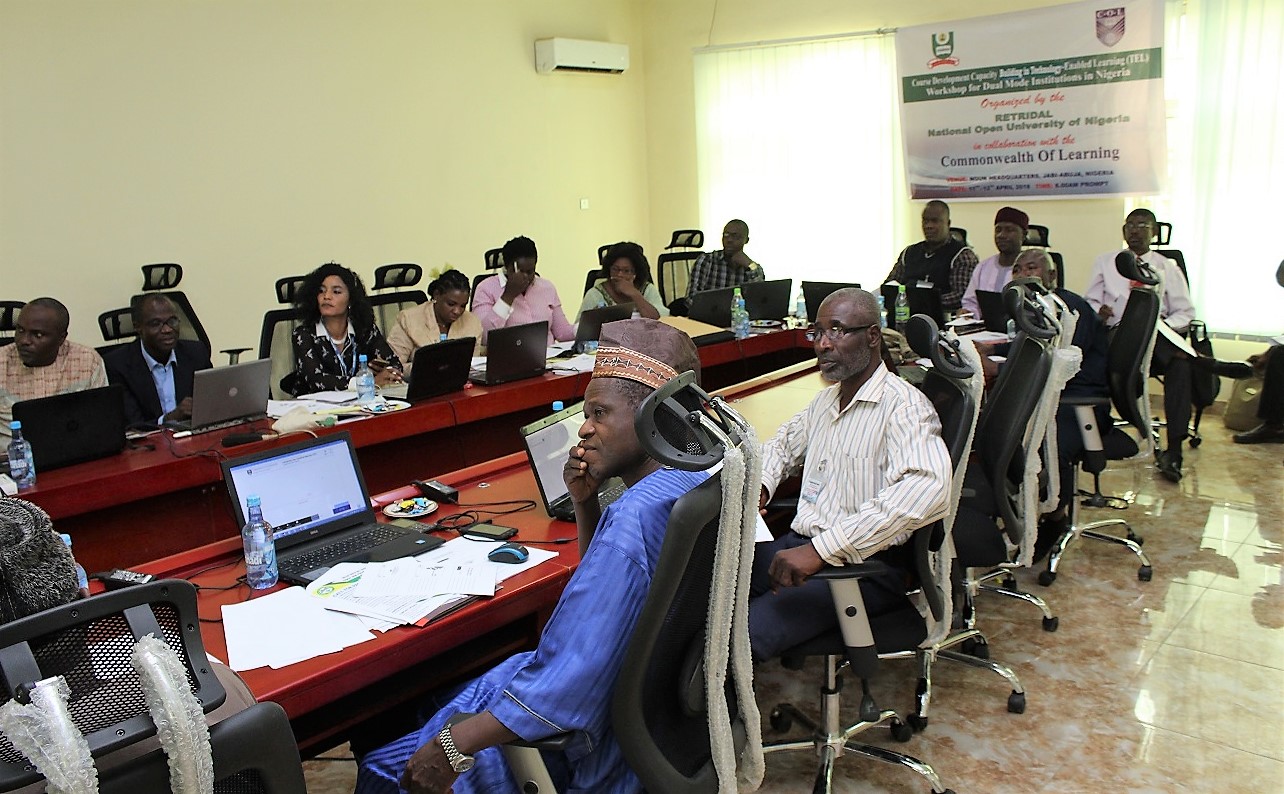
An oft-cited figure from a 2015 UNESCO statement forecasts that higher education demand will swell to 414 million prospective learners by 2030. The scenario of building large, new institutions each week to accommodate such demand would certainly not happen; nor will the scenario of doubling the number of students on existing campuses. Massive Open Online Courses (MOOCs) may play a greater role, but are unlikely to gain traction among first-degree learners-the population where the access issue is most acute. Amidst these constraints are the pressures to maintain quality and credibility in any expansion scenario.
In Nigeria-a country already feeling immense enrolment pressures-, the National Universities Commission (NUC) and some conventional universities are considering alternative approaches to expand access by shifting from campus-based to online learning. This was the focus of a two-day workshop on blended learning held at the National Open University of Nigeria (NOUN) in mid April, to fuse elements of online and face-to-face learning as a means to increase access to tertiary education. The Commonwealth of Learning (COL), in collaboration with the Regional Training and Research Institute for Distance and Open Learning (RETRIDOL), organised this workshop for selected staff of the NUC and nine universities at varying stages of transitioning to dual-mode institutions.
Previously, COL and RETRIDOL trained participants on guidelines and policy development to satisfy NUC requirements on transitioning to dual-mode institutions. However, the current focus was a follow-up to build capacity for this transition. Workshop participants were trained on the use and adaptation of open educational resources, the implementation of technology-enabled learning, and strategies on effective blended learning. In a train-the-trainer modality, participants were tasked with subsequently conducting similar workshops in their home campuses.
The Nigerian Context
Nigeria is Africa’s most populous country, with a population nearing 200 million. The country’s population is also among the continent’s youngest – 42% are 15 or younger. The demand for higher education outweighs the carrying capacity of the country’s tertiary institutions and so, millions of learners are unable to enrol in campus-based higher education despite passing the Unified Tertiary Matriculation Examination (UTME) that qualifies them for entry. According to NUC’s Chief Open Distance Education Officer, Ms Funke Sule, some of these learners are eventually absorbed into distance learning institutions. Others may wait to retake the UTME the following year because of the skepticism and quality concerns associated with online learning, or exit the system altogether.
Blending Learning: The Solution?
During the workshop, the utility of blended learning focused as much on enhancing learning outcomes as increasing enrolment. Student-centred learning such as using the flipped classroom approach and teacher-facilitated collaboration were emphasised. Strategies on accommodating a growing enrolment were viewed through the concept of rotation. If effective learning of content can occur independently, then collaboration and problem-solving can occur in campus tutorials. Just as some of the world’s most congested cities alternate the days cars may drive on the road, universities could engage in rotating or alternating the days cohorts of students visit the campus. This, in addition to effective blended-learning policies and practices, could be deployed as part of a larger strategy to expand access.
Old Approach, New Perspective
Technology notwithstanding, ideas on blended learning emanate from an established literature on open and distance learning (ODL) that has been put into practice by open and dual-mode universities around the world.
NUC has embraced ODL practices as integral to the Nigerian university system. Along with guidelines and quality assurance mechanisms on ODL, the NUC has also devised the Information and Communications Technology-Enabled Supported Blended Learning Model (IESBL) that offers direction on the centrality of learning materials, deployment of appropriate technology, face-to-face component, robust learner support, assessment, and requirements on instructor-to-learner feedback. More broadly, institutions applying for dual-mode status (ten of Nigeria’s 163 universities already have the dual-mode designation) are tasked with demonstrating their capabilities against 13 benchmarks that include programme philosophy, staffing, efficiency, and funding, to which the NUC assigns a grade (70% is the pass mark). The NUC’s representatives reinforced the importance of these requirements in their presentation, prompting a spirited discussion on the challenges some universities have faced in achieving these benchmarks.
With the enrolment of 420,000 learners, NOUN is steadily providing access to learning in Nigeria. Although NOUN has yet to surpass the million-learner mark, as have the Indira Gandhi National Open University, India and the Open University of China, what distinguishes NOUN on its home soil is its inherent view on co-operation with conventional institutions, which can be viewed as competitors. Nevertheless, the outlook is one of spurring greater co-operation among Nigeria’s emerging dual-mode universities in the pursuit of improving access and sharing best practices.
In a higher education climate disproportionately focused on rankings and internationalisation, the issue of access – as the largest challenge facing the sector – is largely overshadowed. All future enrolment demand will occur in the world’s emerging markets where innovative strategies, heightened attention and greater resources are devoted to ameliorating access. The blended-learning initiative for dual-mode universities espoused by COL and RETRIDOL is a salient example of innovative thinking that can chip away at the looming enrolment demands forecasted for 2030.


